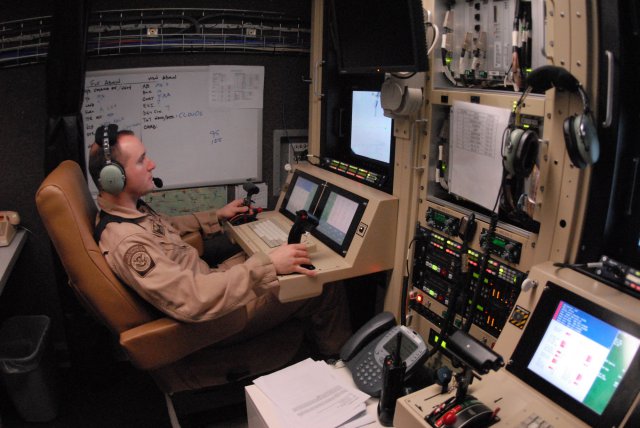The US Air Force is increasing financial incentives for some remotely piloted aircraft pilots to encourage them to stay in service, Air Force Secretary Deborah Lee James announced last Thursday.
The maximum amount of monthly incentive pay will be increased for RPA pilots in the 18X career field who opt to keep flying drones beyond their initial six-year commitments.
In order to get more drone pilots into the fight, the Air Force created the 18X career field for RPA pilots who are only qualified to fly unmanned aircraft. The first pilots to complete 18X training will reach the end of their six-year commitments to fly drones this fiscal year, according to the Air Force.
“Many of our experienced operators are nearing the end of their active-duty service commitment, which means they will have a choice in the not-too-distant future to either stay with us or leave the Air Force,” James said at a news conference at the Pentagon.
That’s why James has signed a memo increasing the monthly flight pay for 18X RPA pilots from a maximum of $650 to $1,500 per month if they stay in the RPA community beyond their six-year commitment after completion of undergraduate RPA training, Air Force officials said.
These moves comes as the RPA community is under strain to fly surveillance and combat missions all over the world.
“The biggest problem is training,” Chief of Staff Gen. Mark Welsh said. “We can only train about 180 people a year and we need 300 a year trained – and we’re losing about 240 from the community each year. Training 180 and losing 240 is not a winning proposition for us.
“The reason is because we are only 63 percent manned in our RTU, our training unit for RPAs, because we can’t release the people from the operational units who are flying the operational support to go be training instructors. And even the people in the training units who are there, about half of them daily are flying operational support missions,” Welsh said.
The Air Force is working with the Defense Department to see if RPA pilots can receive other incentives, but right now 18X RPA pilots are not eligible for retention bonuses because Defense Department policy only allows aviation retention bonuses for pilots who are qualified to fly manned aircraft, Air Force spokeswoman Rose Richeson said.
“We think we need to get this changed and we’re working to do so,” James said. “But for now … I will be utilizing my authority to compensate and incentivize career RPA-only pilots whose service obligations are expiring.”
The Air Force also plans to utilize the Air National Guard and Air Force Reserve to fly more RPA missions, and the service is asking manned aircraft pilots currently flying RPAs to delay their return to manned aircraft.
Currently, about 38 manned aircraft pilots flying RPAs are scheduled to leave the RPA community this summer, Welsh said.
“We are talking to each one of them and asking them about staying,” Welsh said. “We know there are five of them who have already been matched for other jobs; they’ll leave. The other 33, we’re just going to ask them to consider staying.”
The Air Force had expected to reduce the number of combat air patrols that RPA pilots fly, but the service had to reverse course when the U.S. began airstrikes in Iraq and Syria last year, increasing the strain on the RPA community,Welsh said.
“If we had actually drawn down, we’d be fine right now,” he said.
The active-duty Air Force has about 85 percent of the RPA pilots it needs, but the demand for drone missions keeps going up, Col. Ray Alves of Air Combat Command told reporters on Jan. 8.
“We are above our program of record,” Alves said. “We’re actually at surge capacity right now – and surge, by definition, we cannot maintain forever. So we need to start looking at … how do we ensure that the enterprise is correctly manned to continue to meet the levels of demand that the combatant commanders are putting upon us.”
As the other services look at getting rid of aircraft, the Air Force will see if any of those aircrews are interested in joining the RPA community, Welsh said. The Air Force is also considering whether enlisted airmen can fly drones, he said.
“We should look at the enlisted force as a potential approach to more RPA pilots,” Welsh said. “There are some pluses and minuses in the second-order effects of that. We’re looking at those now and I’ll come to the boss with recommendations in the relatively near future.”
Photo: -DoD photo by Senior Master Sgt. David H. Lipp, U.S Air Force/Released
Source: ABC 13 News Now

